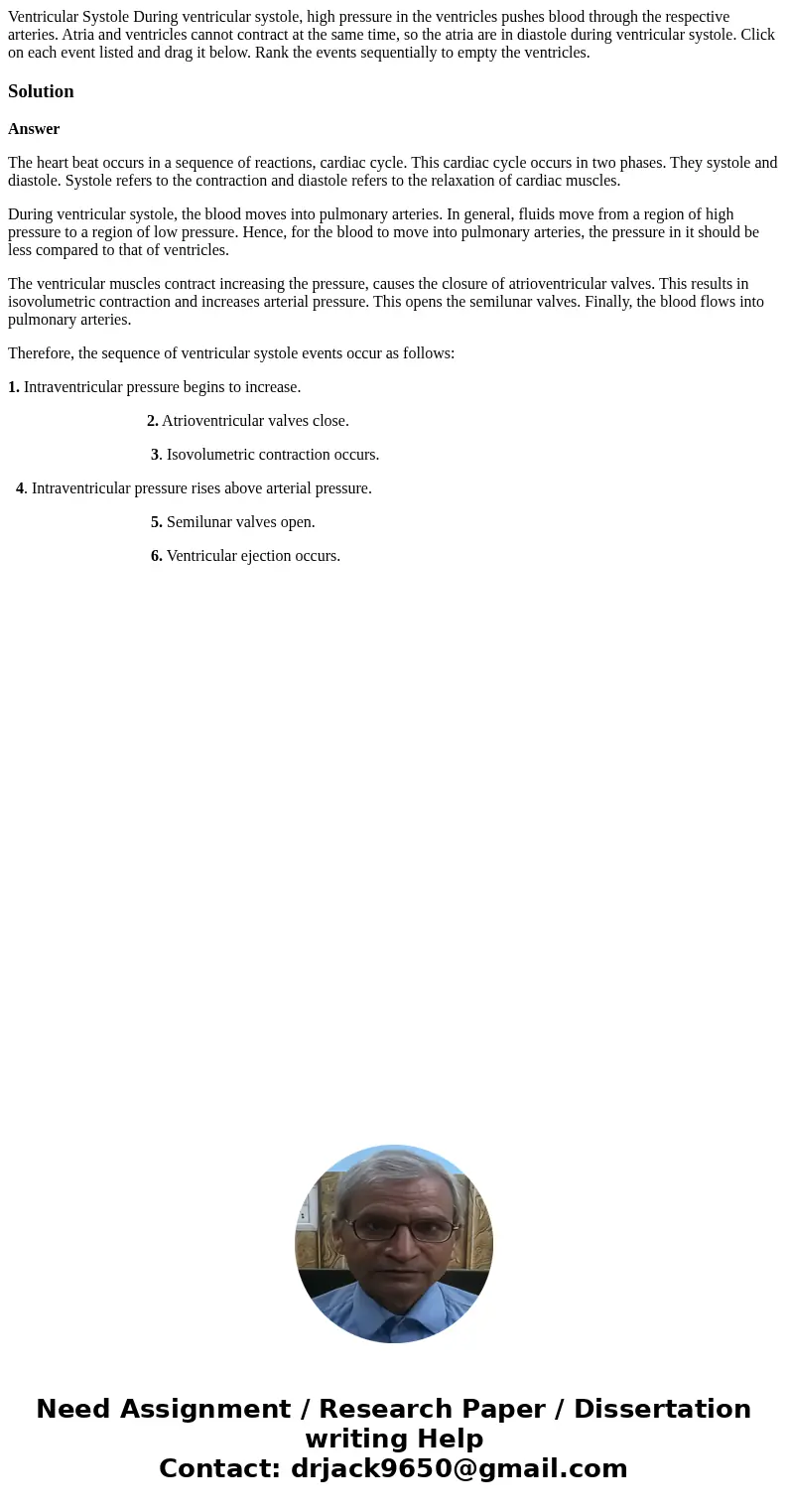Ventricular Systole During ventricular systole high pressure
Solution
Answer
The heart beat occurs in a sequence of reactions, cardiac cycle. This cardiac cycle occurs in two phases. They systole and diastole. Systole refers to the contraction and diastole refers to the relaxation of cardiac muscles.
During ventricular systole, the blood moves into pulmonary arteries. In general, fluids move from a region of high pressure to a region of low pressure. Hence, for the blood to move into pulmonary arteries, the pressure in it should be less compared to that of ventricles.
The ventricular muscles contract increasing the pressure, causes the closure of atrioventricular valves. This results in isovolumetric contraction and increases arterial pressure. This opens the semilunar valves. Finally, the blood flows into pulmonary arteries.
Therefore, the sequence of ventricular systole events occur as follows:
1. Intraventricular pressure begins to increase.
2. Atrioventricular valves close.
3. Isovolumetric contraction occurs.
4. Intraventricular pressure rises above arterial pressure.
5. Semilunar valves open.
6. Ventricular ejection occurs.

 Homework Sourse
Homework Sourse